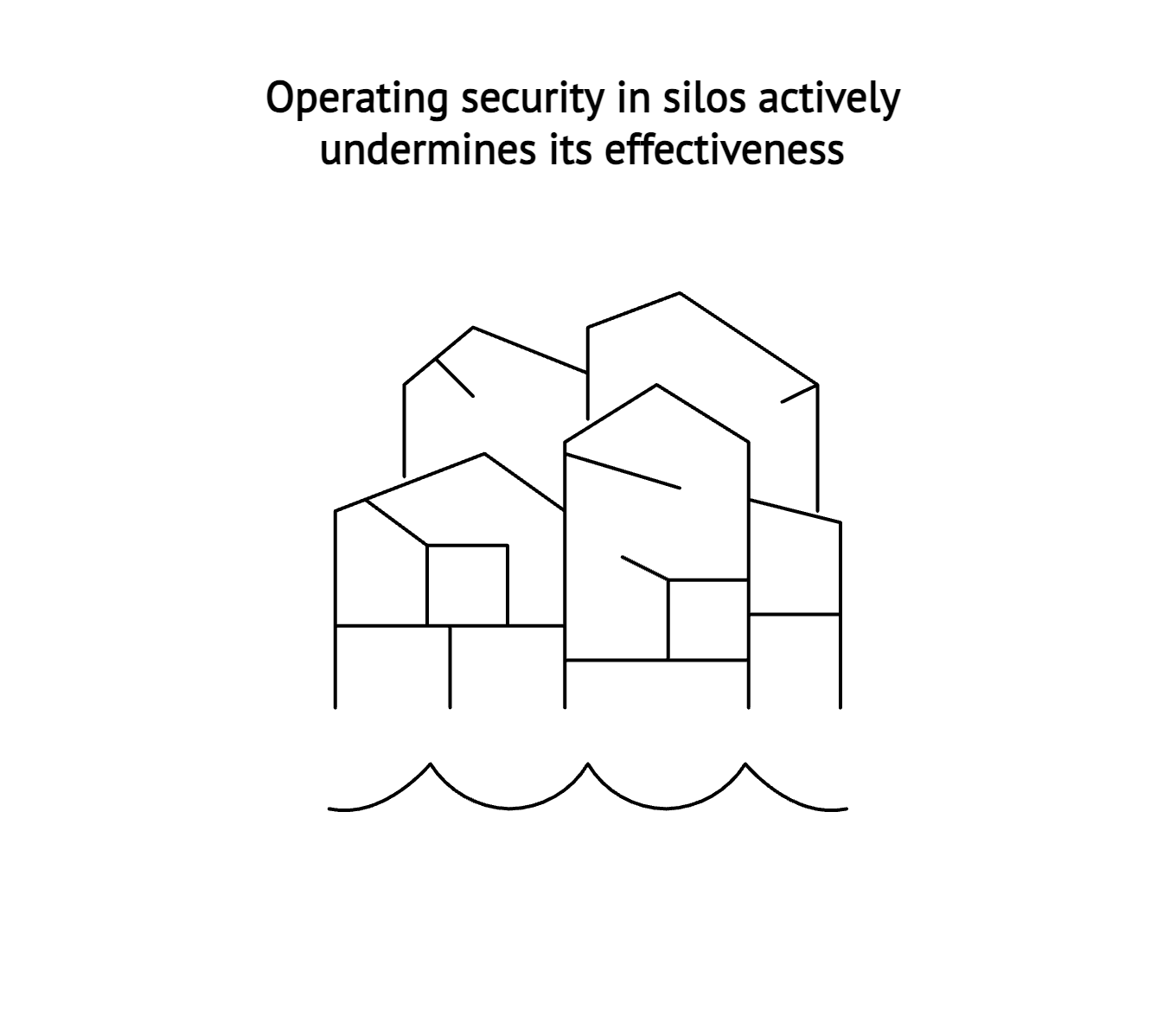The Missing Link in Security Management: Why Cross-Functional Integration Matters
Discover why breaking down the barriers between security and other organizational functions is the key to building effective security.
· Roman Jasins
The Invisible Walls
After years of working with information security, I’ve consistently observed one troubling pattern: security teams operating as islands. This isolation isn’t just unfortunate — it’s actively undermining security effectiveness.
The symptoms are easy to spot:
- Security requirements arrive too late (sometimes never) in development processes, creating friction and delays.
- Business units view security as a blocker.
- Security teams struggle to articulate value in terms that resonate with the rest of the organization.
- Security incidents reveal fundamental disconnects between security controls and operational realities.
- Compliance activities become burdensome rubber-stamping motions disconnected from actual risks.
These aren’t isolated problems. They’re symptoms of a systemic issue: the difficulty to integrate security across organizational functions.
Security Is Inherently Cross-Functional
This statement seems obvious when stated plainly: effective security requires collaboration across organizational boundaries. Yet, we too often treat security as a specialized technical domain, isolated from the rest of the business.
The reality is that security effectiveness depends on:
- Product and Engineering: Building secure systems from the ground up
- Operations: Implementing and maintaining security controls
- Legal and Compliance: Navigating regulatory requirements
- Human Resources: Enabling security culture and awareness
- Executive Leadership: Setting strategic direction and risk appetite
- Business Units: Translating security into operational contexts
When security operates in isolation from these functions, we create a fundamental disconnect between security theory and reality.
Breaking Down the Barriers
Transforming security from an isolated function to an integrated capability requires a fundamental shift. So how do we address the disconnect? In our work with organizations of different sizes, and across industries, we’ve identified three critical elements:
1. Shared Understanding and Language
Most security-business disconnects begin with terminology. Security teams speak in technical jargon and risk frameworks, while tech and business functions operate with completely different language and priorities.
Creating effective cross-functional security requires a shared language and frameworks that translate security concepts into business contexts and vice versa.
2. Process Integration, Not Overlay
Traditional approaches treat security as a separate process that overlays existing workflows — an additional “gate” that work must pass through. This creates friction.
Cross-functional security integration embeds security within existing processes rather than adding parallel workflows:
- Security requirements become part of product design rather than separate documentation
- Security testing integrates with development workflows rather than occurring separately
- Security governance aligns with existing business planning rather than creating parallel processes
3. Distributed Responsibility
Perhaps most fundamentally, cross-functional security requires distributing security responsibility across the organization rather than centralizing it in a specialized team.
This doesn’t mean eliminating security expertise. It means leveraging specialized security knowledge to enable and empower other functions rather than to control them.
In practice, this looks like:
- Clear security patterns that development teams can implement independently
- Decision frameworks that enable business units to make appropriate risk trade-offs
- Self-service security capabilities that functions can consume without bottlenecks
- Security “champions” embedded within different teams
Assessing Cross-Functional Security
How integrated is security across your organization’s functions? Ask these questions to identify potential gaps:
Process Integration: Are security activities integrated into existing workflows or do they exist as separate processes?
Decision Authority: Is it clear who can make which security decisions, including appropriate delegation to functional teams?
Knowledge Transfer: Do functional teams have access to security knowledge in forms they can apply?
Shared Artefacts: Are there boundary-crossing documents, tools, frameworks that facilitate communication across security and other functions?
Feedback Loops: Do security teams receive regular input from other functions about the effectiveness of security controls?
Gaps in these areas often indicate cross-functional security issues.
The Path Forward
Removing the barriers between security and other functions is hard. It requires rethinking fundamental aspects of how you approach security management, but the payoff is worth the effort.
At Peak Defence, we’ve spent some time developing approaches that transform security from an isolated function to an integrated organizational capability. There’s no one-size-fits-all solution, but the core principle remains constant: the most significant opportunities for improving security effectiveness often lie not in new tools or technologies, but in breaking down the invisible walls between security and the rest of your organization.
Next week, I’ll be sharing more about our approach to building resilient and effective security across organizations of all sizes. In the meantime, I’d love to hear about your experiences with cross-functional security integration. What challenges have you faced? And share what approaches have worked for you. You can continue the conversation on my LinkedIn post if you’d like to share your experiences.
Related Topics:
Related Articles
The Risk Owner's Guide to Effective Risk Reviews
In today's intricate risk environment, a risk owner's role is essential for maintaining an organization's security and compliance. Risk owners act as the main custodians of designated risks....
Read More →Connecting the Dots: Why Security Knowledge Integration Matters
Learn how connecting fragmented knowledge silos can transform security in ways that traditional approaches cannot....
Read More →Stay Updated
Subscribe to receive the latest security insights, industry trends, and expert advice directly to your inbox.
